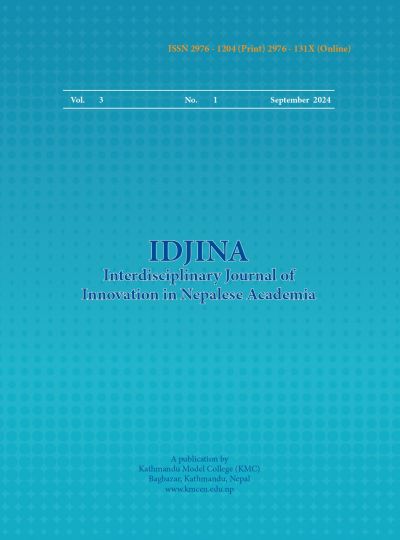Syntactic Parallelism in Muglan
DOI:
https://doi.org/10.3126/idjina.v3i1.70300Keywords:
Sentence types, sentence function, syntactic parallelism, voiceAbstract
This article explores the syntactic parallelism in Mulan. The data are carried out from the secondary sources. The qualitative and descriptive method is used for analysis. The sixteen sentences are taken from the source and their targets were noted along with the transliteration. The selected sentences were analyzed on the basis of structure, functions and voice. On the basis of syntactic parallelism, the findings have been drawn on the basis of voice, sentence types and sentence function. Most of the Nepali active voices in the source text (ST) have been translated into English active voices in the target text (TT). Therefore, the tendency of active (ST) into active (TT) was very high. Throughout the sampled data, Nepali passive voice (ST) into English passive voice (TT) has very low. Similarly on the basis of sentence types, simple sentences in the ST translated into simple sentences in the TT has higher tendency as compared to compound sentences in the ST translated into compound sentences in the TT. The complex sentences in the ST translated into complex sentences in the TT have highest tendency. Likewise on the basis of sentence function, the declarative sentences in the ST into declarative sentences in the TT has highest tendency. Interrogative sentences in the ST into interrogative sentences in the TT has higher tendency than exclamatory sentences in the ST into exclamatory in the TT.The imperative sentence (ST) into imperative sentence (TT) has lowest tendency.
Downloads
Downloads
Published
How to Cite
Issue
Section
License

This work is licensed under a Creative Commons Attribution-NonCommercial-NoDerivatives 4.0 International License.
This license allows reusers to copy and distribute the material in any medium or format in unadapted form only, for noncommercial purposes only, and only so long as attribution is given to the creator.




